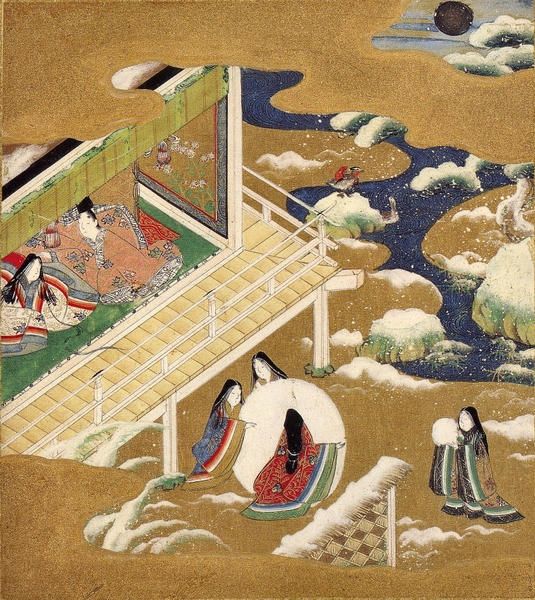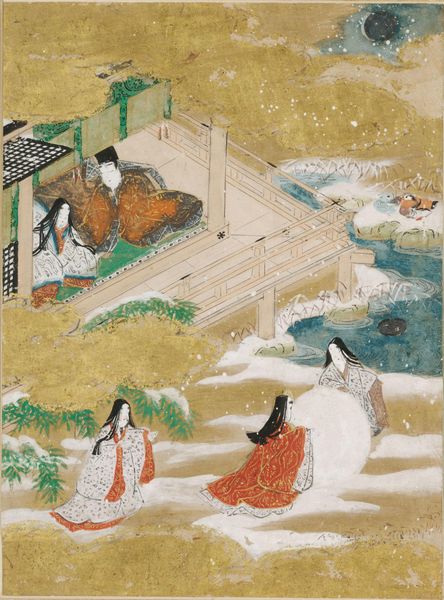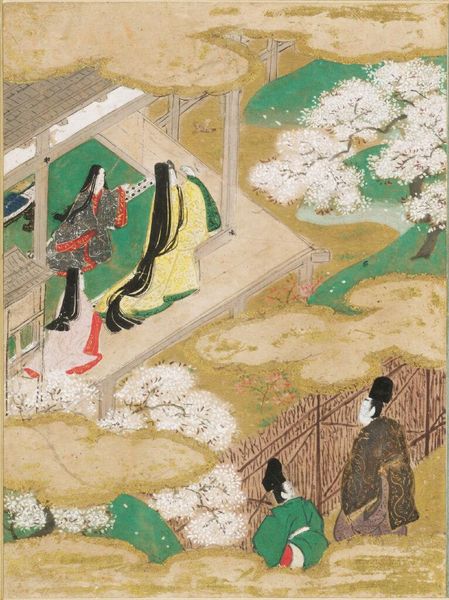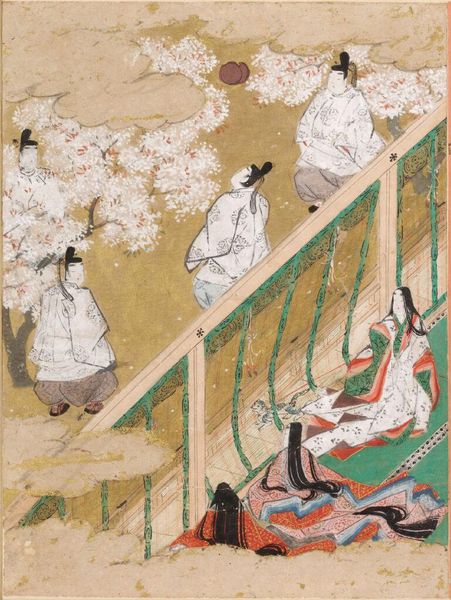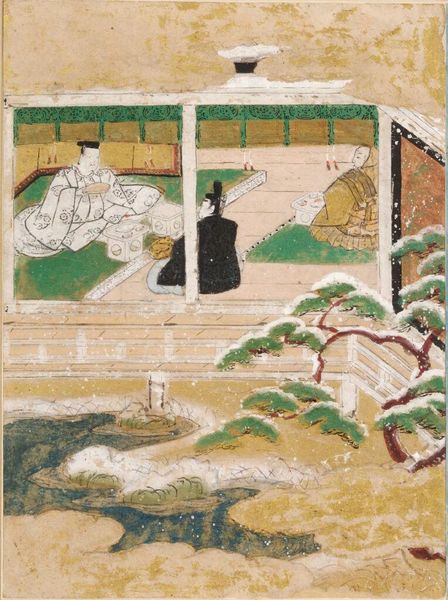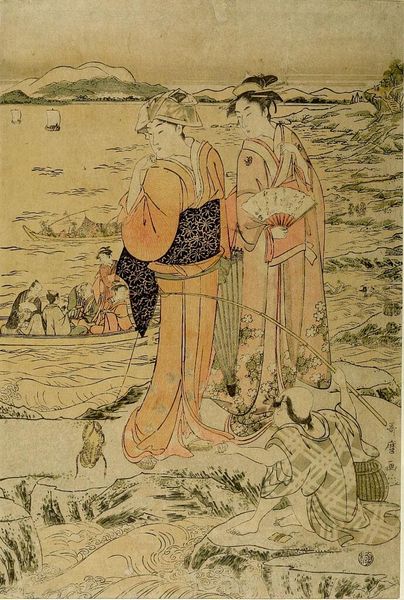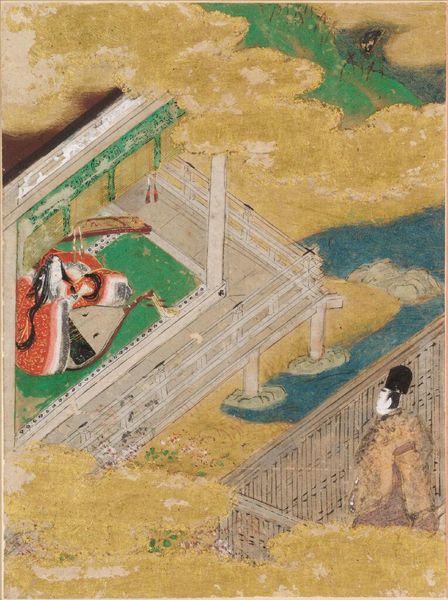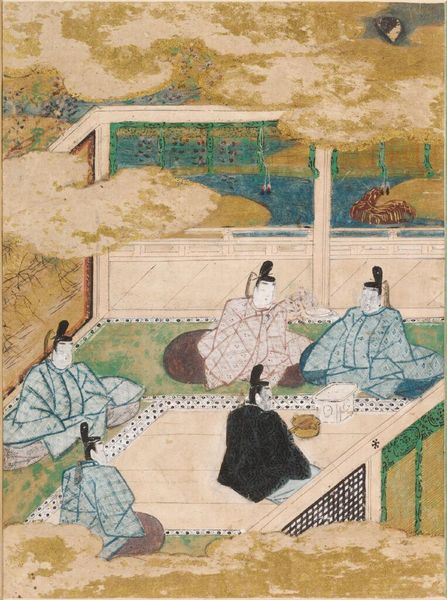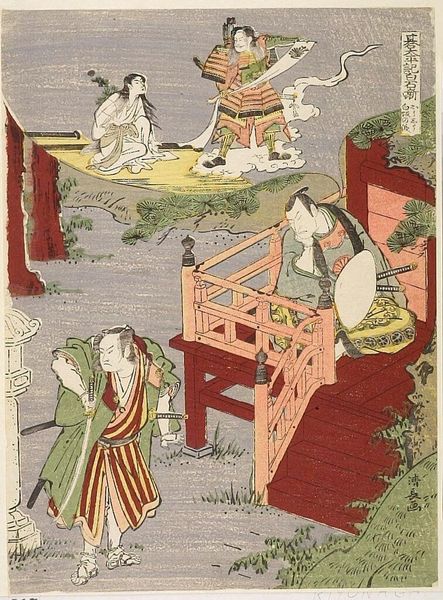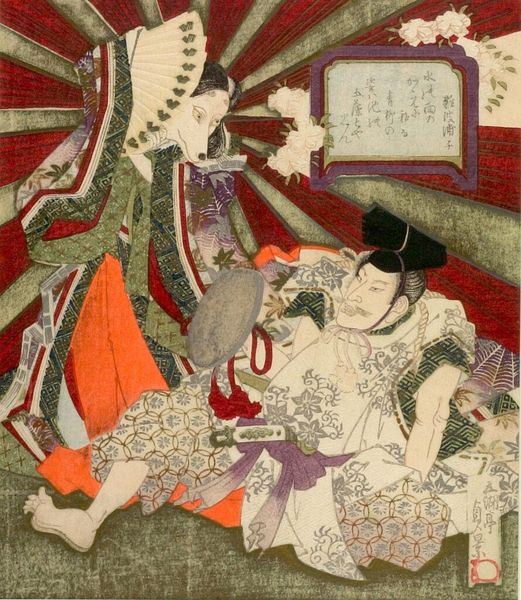
painting, watercolor
#
water colours
#
painting
#
asian-art
#
landscape
#
figuration
#
watercolor
#
genre-painting
#
miniature
#
yamato-e
Copyright: Public domain
This illustration of the Genji Monogatari, specifically the Wakamurasaki chapter, was created by Tosa Mitsuoki during the Edo period, a time when Japan was experiencing relative peace and flourishing artistic innovation. Mitsuoki, who revived the Tosa school of painting, positions us within a narrative deeply entrenched in the aristocratic circles of Heian-era Japan. The tale of Genji, written by Murasaki Shikibu, often reflects upon courtly life, love, and the ephemeral nature of beauty. Here, the artist captures a scene resonant with both aesthetic refinement and social complexity. The figures, draped in elaborate kimonos, are suggestive of their high social standing. While seemingly depicting a serene gathering, the piece subtly comments on the gendered expectations and the nuanced power dynamics within the imperial court. "The Tale of Genji" explores female identity and experience through a male lens. The women represented are often romanticized, and judged by their beauty and grace. The illustration invites us to consider how historical narratives shape our understanding of identity, particularly through the lens of gender and class.
Comments
No comments
Be the first to comment and join the conversation on the ultimate creative platform.
